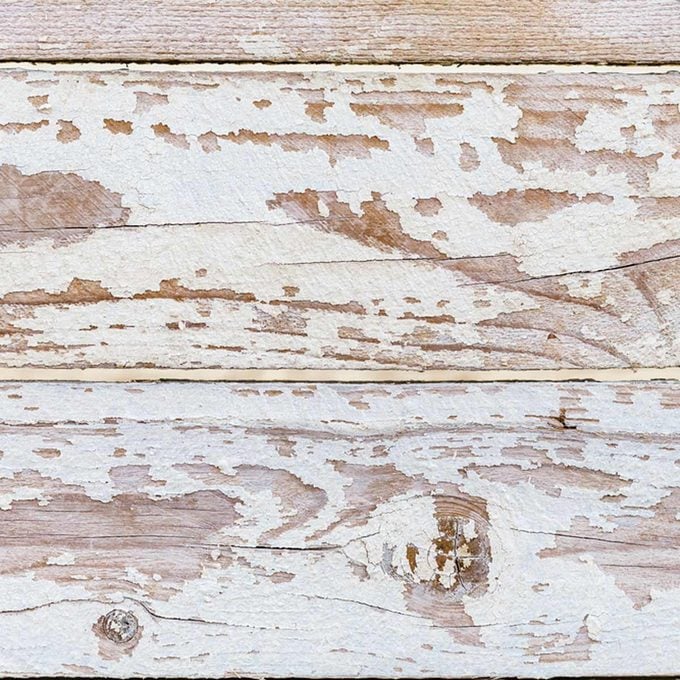Unlock the secrets of the chic pickled wood finish, from its Nordic roots to DIY vinegar tricks and the best woods to showcase its ethereal charm.
Pickled Wood Finish for Interior Design and Decor

Most finishes make natural wood darker. A “pickled finish”—sometimes referred to as bleaching or whitewashing—makes natural wood lighter. Where did it all begin? In days of yore, lime was often applied to furniture and other wood objects to prevent bug infestations. Today pine, ash, oak and other open-pore woods are the species most commonly “pickled.”
On This Page
What is a pickled wood finish?
A pickled wood finish, often referred to as “pickling,” gives wood a washed-out appearance that showcases its natural grain. This finish technique has its roots in Scandinavian countries, where it was used to brighten interiors during long, dark winters. The primary goal of pickling is to create a translucent finish that lightly tints the wood, typically leaving it with a white or light-gray hue, and accentuating its inherent textures and patterns.
Is there a difference between whitewashing and pickling?
Yes, there is a subtle difference between whitewashing and pickling, although the terms are sometimes used interchangeably. Both techniques aim to give wood a lightened, aged appearance. However, whitewashing usually employs a diluted white paint to give wood a muted white finish. Pickling, on the other hand, specifically uses a pickling stain or white/light-colored pigment, allowing for greater transparency and showing off the wood grain in more detail.
How do you make wood look pickled?
Achieving a pickled look requires a few essential steps:
- Preparation: Begin by thoroughly cleaning the wood surface. Sand it lightly to remove any finish or rough patches and to open up the grain.
- Applying the Pickling Stain: Using a paintbrush, apply the pickling stain in the direction of the wood grain. Ensure even coverage.
- Wiping: After a few minutes (or as the manufacturer’s instructions dictate), use a clean rag to wipe away the excess stain, working in the direction of the grain.
- Sealing: Once the desired look is achieved and the stain is completely dry, finish by applying a clear protective sealant to preserve the pickled effect.
How do you pickle wood with vinegar?
Pickling wood with vinegar offers a more natural approach:
- Make the Vinegar Stain: Mix together equal parts of white vinegar and steel wool in a container. Let the mixture sit for at least a day until the steel wool dissolves, creating a rustic stain.
- Test the Stain: Since vinegar reacts differently with various types of wood, always do a patch test on a hidden area.
- Application: Brush the vinegar solution onto the wood in the direction of the grain.
- Enhance (Optional): For a more pronounced pickled effect, after the vinegar stain has dried, you can apply a white or light-colored wash over it, then wipe away the excess.
- Seal: Protect your pickled wood with a clear sealant.
What is the best wood to have pickled?
While you can pickle almost any wood, the best results often come from woods with pronounced grains. Oak is a top choice for pickling because of its strong grain patterns that get highlighted beautifully with a pickled finish. Pine, ash, and hickory are also suitable candidates. Softwoods like pine can absorb pickling stain more readily, resulting in a more profound effect.
How do you seal pickled wood?
To preserve the beauty of your pickled wood finish, sealing is crucial:
- Choose a Clear Sealant: Opt for a clear water-based polyurethane or acrylic topcoat. These sealants won’t yellow over time, ensuring the pickled effect remains unaltered.
- Application: Apply the sealant using a high-quality synthetic brush, following the direction of the wood grain. For additional protection, you can apply multiple coats, ensuring adequate drying time between applications.
- Sanding Between Coats (Optional): For an ultra-smooth finish, lightly sand the surface using fine-grit sandpaper between sealant coats.
Pickling is a timeless technique that can transform ordinary wood into a vintage masterpiece. With these steps in hand, any DIY enthusiast can achieve this charming finish, adding character and a touch of history to their projects.




















